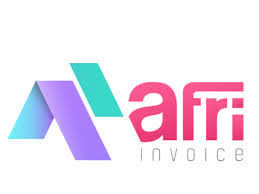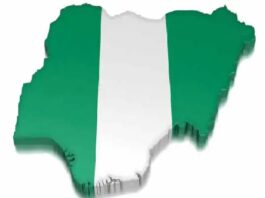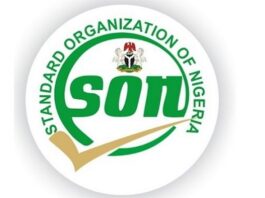Oyisi Adams
After two decades of unfulfilled promises across several governments, Nigeria’s maritime sector has finally gotten a boost that will positively transform its fortunes and that of many industries across the value chain.
Last month’s directive by the Minister of Marine and Blue Economy, Adegboyega Oyetola, to the Nigerian Maritime Administration and Safety Agency (NIMASA) to commence the disbursement of the Cabotage Vessel Financing Fund (CVFF) not only marked a historic chapter for indigenous shipowners and the maritime sector, it was a revolution whose time had come to sail the waters for rapid national development.
A new dawn for local shipping
Established under the Coastal and Inland Shipping (Cabotage) Act of 2003, the CVFF was designed to empower Nigerian shipowners through low-cost financing for vessel acquisition. Yet, despite accumulating over $700 million from a 2% surcharge on cabotage contracts, the fund lay dormant under successive administrations, crippling local capacity while foreign vessels dominated Nigeria’s waters.
Highlighting the significance of the fund, Oyetola stated that this was more than just disbursing funds, “It’s about rewriting a chapter in our maritime history,” the Minister stated.
Indeed. Estimates from NIMASA showed that the over reliance on foreign vessels have led to annual capital flight exceeding $1.8 billion.
“We are acting in accordance with the directive of the Honourable Minister to ensure indigenous shipowners finally have access to this critical funding,” NIMASA Director-General, Dayo Mobereola, said during a recent oversight visit by the House of Representatives Committee on Maritime Safety.
And with the Agency targeting the next few months (August) for the first tranche of disbursements, stakeholders have expressed optimism that the effective and transparent implementation of the $700 million intervention could finally unlock Nigeria’s maritime potential.
The disbursement of the CVFF further demonstrates the foresight of President Bola Tinubu’s administration in establishing the Federal Ministry of Marine and Blue Economy as a cornerstone of its economic agenda. This is because the fund aligns with the Ministry’s broader goals of enhancing port efficiency, and leveraging Nigeria’s vast coastline for economic growth.
“We are not merely funding vessels; we are investing in a future where Nigerian shipping companies stand shoulder-to-shoulder with global players,” Oyetola stated.
The disbursement framework, approved by the Federal Ministry of Marine and Blue Economy, adopts a tripartite model to ensure accountability: A 50% from NIMASA; 35% from partnered banks, and 15% equity from shipowners, while up to 12 Primary Lending Institutions (PLIs) will vet applicants, offering loans of up to $25 million per company at single-digit interest rates, which is repayable over 15–20 years.
“The guidelines have been streamlined for beneficiaries to access funds this year,” NIMASA assured during a House of Representatives oversight visit, highlighting the strict adherence to proper management of the fund.
Economic Gains of CVFF
The CVFF’s disbursement is expected to create a ripple effect in Nigeria’s maritime sector. Stakeholders are unified in their views that it will not only boost indigenous fleet capacity, reducing Nigeria’s reliance on foreign vessels; it will also generate thousands of jobs for Nigerians in shipping, logistics, and maritime support services.
Beyond just providing incentives for indigenous shipowners to won ship vessels, the CVFF will unlock immense potential of the Nigerian maritime sector, prominent among this is the creation of jobs for thousands of Nigerians.
For instance, in the area of job creation, the House Committee on Maritime Safety projects over 50,000 direct jobs in crewing, maintenance, and logistics. According to the Chairman of the Committee, Hon. Uduak Odudoh, a “timely disbursement will boost employment and Nigeria’s global maritime image.”
Similarly, it will boost growth in local content, as the grossly underutilised Nigerian shipyards may see resuscitated demand for local shipbuilding and repairs; expanding the capacity of other ancilliary industries in the maritime value chain, while reducing capital flight from foreign vessel charters, estimated at billions of dollars annually.
Although there are systemic challenges, which the Ministry of Marine and Blue Economy and other partner government agencies are making concerted efforts to address, stakeholders are optimistic that the leadership efforts already shown by the Minister and the transparency of the CVFF disbursement, will go a long way to ensure the country’s maritime sector benefits tremendously from it. For others, the utilisation of the fund could effectively position Nigeria as a maritime hub for West Africa.
Stakeholders react
Indigenous shipowners have since applauded the move, but also emphasised the need for transparency and strict adherence to due process. “The Minister’s move is extremely commendable, but due process must be followed,” said Greg Ogbeifun, former President of the Shipowners Association of Nigeria (SOAN). His caution reflects industry scars from unmet promises.
Others highlight structural challenges. SOAN President Sonny Eja noted, “Partnering with the Bank of Industry is a good development, but beneficiaries must use funds judiciously.” His call for safeguards against loan defaults underscores a key risk: without viable cargo contracts, even well-financed ships may struggle.
Maritime lawyers echo these concerns. Mike Igbokwe (SAN) urged pragmatism: “Let’s start with barges for transshipment if large vessels are unfeasible. The fund must not idle in banks.” Funke Agbor (NMLA President) added, “Disbursement alone isn’t enough. We need policies to ensure Nigerian-flagged ships get cargo.”
In the same vein, maritime lawyers have also lauded the move, emphasizing its potential to reshape Nigeria’s shipping industry. “The fund should not lie idle in banks. Even if we start with barges for transshipment, let’s put this money to work,” Mike Igbokwe (SAN) said, as he urged for swift implementation.
Also, the President of the Nigerian Maritime Law Association (NMLA), Funke Agbor, highlighted the ripple effects of the disbursement, noting that “Beyond vessel ownership, this will create sea-time training opportunities for cadets and stimulate shipbuilding and repair industries.”
Recently, the President of the Nigerian Shipowners Association, Sola Adewunmi commended Oyetola for the development, stating that “This is the first time a minister has directly ordered NIMASA to begin the process. We are hopeful.” Many stakeholders share the same refrain.
The Road Ahead
With NIMASA pledging disbursements by August 2025, all eyes are on its effective disbursement as well as transparency in the process. As Captain Ladi Olubowale of the African Shipowners Association noted, “This is Nigeria’s moment to play on its field.”
Two decades after its creation, the disbursement of the CVFF is a clear indicator of Nigeria’s readiness to further harness its huge maritime potential.
“We’re investing in a future where Nigerian shipowners compete globally,” Oyetola emphasised. With a proactive minister and collaboration with other stakeholders in the maritime sector, the future looks bright indeed for a nation with Africa’s longest coastline and $10 trillion in untapped blue economy potential.








